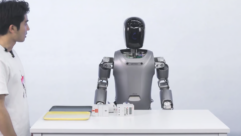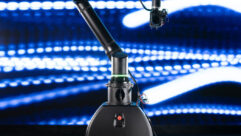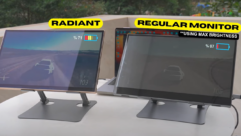All good things must come to an end. Boston Dynamics has posted a video bidding farewell to Atlas, its popular robot that has captivated the web since its initial reveal.
“For almost a decade, Atlas has sparked our imagination, inspired the next generations of roboticists, and leapt over technical barriers in the field,” reads Boston Dynamics’ video caption “Now it’s time for our hydraulic Atlas robot to kick back and relax. Take a look back at everything we’ve accomplished with the Atlas platform to date.”
WATCH: UBTech’s robot converses with natural speech, determines and completes tasks
This may not be the end, however, as Atlas may be stepping aside to enjoy retirement because a newer, more powerful model is about to make its debut. For now, enjoy this touching sendoff to our parkour-loving robot.
The following was originally published August 18, 2021:
By training Atlas to maneuver its way through complex parkour courses, Boston Dynamics engineers develop new movements inspired by human behaviors and push the humanoid robot to its limits.
“There are a lot of pretty exciting behaviors here, and some of them are not totally reliable yet,” says Ben Stephens, the Atlas controls lead.
In a blog post for Boston Dynamics Calvin Hennick gets into the details.
For the first time today, both Atlas robots have completed the complex obstacle course flawlessly. Or, almost flawlessly.
The first of the two robots ran up a series of banked plywood panels, broad jumped a gap, and ran up and down stairs in the course set up on the second floor of the Boston Dynamics headquarters. The second robot leapt onto a balance beam and followed the same steps in reverse, and then the first robot vaulted over the beam. Both landed two perfectly synchronized backflips, and the video team has captured every move.
]The robot did pump its arm, but it also stumbled a bit on this simple move. It was just the slightest stutter step, something most people watching the video would never notice. But the Atlas team notices every detail and they want to get it right.
“We hadn’t run that behavior after the backflip before today, so that was really an experiment,” says Scott Kuindersma, the Atlas team lead at Boston Dynamics. “If you watch the video closely, it looks a little awkward. We’re going to swap in a behavior we’ve tested before so we have some confidence it will work.” MORE@Boston Dynamics
Why parkour? A robot’s ability to complete a backflip may never prove useful in a commercial setting. (Atlas is a research platform, not a commercial product.) But it doesn’t take a great deal of imagination or sector-specific knowledge to see why it would be helpful for Atlas to be able to perform the same range of movements and physical tasks as humans. If robots can eventually respond to their environments with the same level of dexterity as the average adult human, the range of potential applications will be practically limitless. Parkour, as narrow and specific as it may seem, gives the Atlas team a perfect sandbox to experiment with new behaviors. It’s a whole-body activity that requires Atlas to maintain its balance in different situations and seamlessly switch between one behavior and another. MORE@Boston Dynamics
Looking back over five years of Atlas videos, it’s easy to lose sight of just how much progress the team has made during that time. In fact, some of the improvements are invisible to the average viewer, even though they represent giant leaps (quite literally, in this instance) in technology. Although Atlas was doing dive rolls and handstands and backflips in earlier videos, the underlying processes for controlling those moves have evolved.
“Atlas’s moves are driven by perception now, and they weren’t back then,” Kuindersma explains. “For example, the previous floor routine and dance videos were about capturing our ability to create a variety of dynamic moves and chain them together into a routine that we could run over and over again. In that case, the robot’s control system still has to make lots of critical adjustments on the fly to maintain balance and posture goals, but the robot was not sensing and reacting to its environment.” MORE@Boston Dynamics










